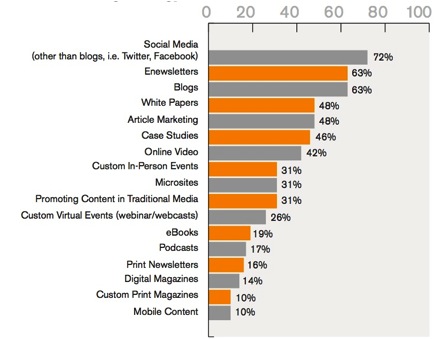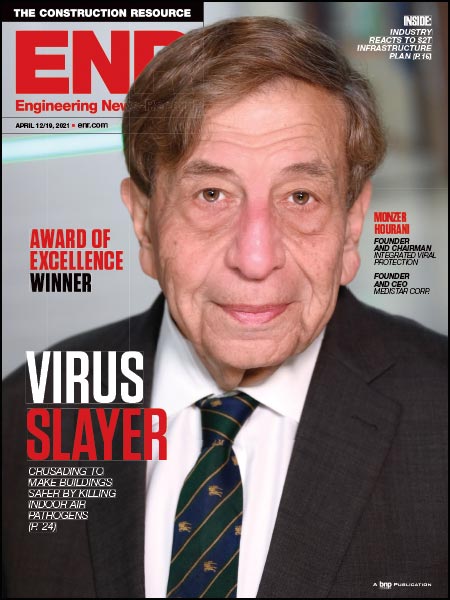
Have you ever picked up a company's brochure or flyer? Watched an infomercial or a shopping channel on television? Ordered a product DVD explaining the benefits of a new mattress or a vacation destination? Leafed through a company newsletter?
These are just a few of the ways companies use content to market their products and services to customers.
Content marketing is nothing new. Companies having been creating and distributing content for many years, both to attract new business and to retain existing customers. However, unlike traditional forms of marketing and advertising, using content to sell isn’t selling or “sales-ey.” It isn’t advertising. It isn’t “push marketing,” in which email messages are sprayed out at groups of consumers in bulk. Rather, using content to sell is a “pull strategy”—it’s the marketing of attraction.
It’s being there when your customer needs you and seeks you out for relevant, educational, helpful, compelling, engaging and sometimes entertaining information. When customers and prospects come to you, rather than you going to them, the advantages are obvious. They’re interested, open and receptive. They’ve chosen the moment—all you have to do is be ready. And it spares you much of the headaches and expense of outreach marketing efforts: media planning and buying, direct-mail dumps, spraying and praying when browsers can be configured to block ads, spam filters can send an e-mail campaign into oblivion, and digital video recorders can make TV spots irrelevant—not to mention that most recipients empty their mailbox into the recycling bin.
There’s really no debate over the benefits of “tune in” versus “tune out” or “pull” versus “push.”
Here's one reason why: A Roper Public Affairs poll found that 80% percent of business decision-makers prefer to get information about a company from articles rather than from ads. Seventy percent say content marketing makes them feel closer to the sponsoring company, and 60% believe company content helps them make better decisions about products. or the organization it represent, for a company’s products and services, and for the employees who represent the business or service, content marketing encourages brand recognition, trust, authority, credibility, loyalty and authenticity.
Content marketing creates value. For one thing, it educates the customer, answering questions and providing a foundation of information. While content marketing can be used to augment traditional advertising campaigns, some companies are leveraging content to replace more traditional forms of advertising and marketing. Perhaps most appealing, content marketing can spark customer engagement at all stages of the buying cycle. Further, it can establish an ongoing relationship between the company and the customer, inspiring up- and cross-selling, renewals, upgrades and referrals.
Digital Changes Everything
While content marketing is hardly new (businesses have been publishing newsletters and brochures practically since the advent of the printing press), the rise of the internet and other digital channels, particularly social media, has significantly lowered the bar and the costs of leveraging content to profitably attract clients and prospects.
Websites. Blogs. YouTube. eBooks. Downloadable white papers. Twitter. Facebook. Search engines. These channels remove many of the hard cost barriers that were once a mandatory part of creating and disseminating great content. Paper stock, film stock, printing, shipping, warehousing, postage, processing and developing—most of the physical and logistical hurdles to creating and disseminating great content are gone.
While content marketing may be cheaper thanks to digital innovations, it certainly isn’t free or any easier. Consistently delivering quality content to a target audience requires thought, work, originality, strategy, experimentation and persistence. A plethora of potential outlets for content online (the options seem to multiply every day) add complexity to the choices you must make about what content to create, in what form, and how to disseminate it—not to mention how to measure its effectiveness. One thing is certain: Digital channels overwhelmingly account for the preponderance of content marketing outlets, as this chart from Junta42 illustrates:
Research from this same study, conducted in 2010, found that 60% of marketers planned to increase spending for content marketing in the coming year. Content already accounts for more than 33 percent of marketing budgets—often double that in smaller organizations. These efforts and budgets now are flowing into digital channels.
While there are no rules when it comes to content marketing, there are best practices. Aside from following common sense—check spelling and grammar; if the content is a video, it should probably contain moving images and audio‑—there are no hard-and-fast rules, only guidelines. The content that works to support your business won’t be what works for another business.
Be prepared to experiment. Be prepared to fail, but make sure your learn from your failures. Above all, have fun: Creating interesting, compelling, original, educational, diverting, immersive, entertaining and attractive content can be just as valuable and inspiring for the creator as it is for its intended audience.
Consider how these architectural and engineering companies are leveraging digital content marketing channels for inspiration:
PR: Nichols Concrete Cutting of San Francisco garnered significant press coverage on its seismic refit on the original Stanford University quad. Those articles now live in perpetuity on the press section of the company’s website, boosting profile and credibility, rather than disappearing into a clippings file.
Facebook: New York-based BKSK Architects maintains an active presence on Facebook. The company uses the channel for all sorts of purposes. Sure, the page highlights press coverage and awards, and features images and text about events, such as a groundbreaking ceremony for a project. The company is also using its social media presence for recruiting.
YouTube: LR Architectural Restoration of Indianapolis posts "before and after" videos of its projects on YouTube. Showing can be a lot better than telling. Many software tutorials for architectural and engineering packages are available on YouTube as well, many from vendors. Search “architect CAD tools” on YouTube for examples.
Blogs: Blogs confer authority and thought leadership on organizations, but also on individuals and smaller practitioners. Bob Borsen, an architect in Texas, blogs about his work and life as an architect (http://www.lifeofanarchitect.com). The blog isn’t just about him and his firm. It offers consumers advice on how best to work with an architect.
Rebecca Lieb is a digital marketing consultant and author of a best-selling book on search engine optimization.
You can write her directly at rebecca.lieb@gmail.com.


Post a comment to this article
Report Abusive Comment